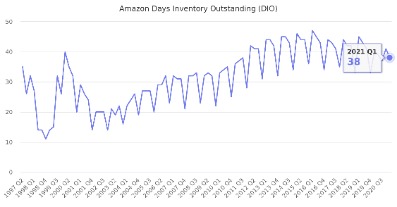Content
The tax law, however, may spread recognition of income or a tax liability, over, say, three years. This timing difference will be reflected in the financial statements. The remaining amount due the IRS in the future will be reported as a deferred tax liability of $42.
An income tax provision, which provides an important link between GAAP financial statements and tax liabilities, helps provide an accurate financial picture to management and shareholders. This article will highlight some of the important aspects of an income tax provision and how it clarifies GAAP financial statements. In contrast, other items (for example, certain tax-exempt income) may be permanently excluded from a local income tax base, and this does not result in the recognition of a deferred tax. Regulatory and legislative developments in the United States and abroad have generated continued interest in the financial accounting and reporting framework, including accounting for income taxes.
Presentation Of Income Tax Liabilities
LLCs must pay the full balance of any LLC fee as well as any nonconsenting nonresident (NCNR) member’s taxes by the original due date of the tax return to avoid penalties and interest. If an LLC’s tax year ends prior to the 15th day of the 6th calendar month of its tax year, then no estimated payment is required and the LLC must pay the fee by the due date of the tax return. The guidelines on how LLCs calculate total income changed for tax years that begin on or after January 1, 2007. Refer to the instructions for Form 568, Limited Liability Company Return of Income, for information and examples about conducting business within and outside of California. For tax years that begin on or after January 1, 2001, the definition of total income excludes amounts already included in the calculation of the fee of another LLC.
- According to IAS 12.71, any business entity’s tax payable is to be recorded under the current liabilities of the balance sheet.
- It can be tricky to determine when, and if, you’ll be able to take advantage of a deferred tax asset.
- As an alternative to payment, the income tax liability can be reduced through the application of offsetting tax credits granted by the applicable government entity.
- This process is the most complicated part of the income tax provision that has to be calculated by the company.
Tax provisions are considered current tax liabilities for the purpose of accounting because they are amounts earmarked for taxes to be paid in the current year. Although the basic definition sounds simple, what’s not always simple is how to prepare for tax provision calculation in a way that is best for the business while being fast, accurate, and defendable. Estimating each year’s tax provision is not a menial task and can require a great deal of time and effort for corporate tax departments.
2 Basic approach for deferred taxes
However, current tax assets or current tax liabilities can only be balanced off in the balance sheet if the company has the legal right to offset it and intend to settle tax payable on a net basis. Under section 29, deferred tax should be measured using the tax rates that are expected to apply when the reversal of the timing differences takes place. Under IAS 12, deferred tax assets and liabilities should be measured at the tax rates that are expected to apply to the period when the asset is realised or the liability is settled.

The two systems’ different depreciation and amortization rules are common causes of timing differences. These differences in reporting for the two systems—particularly with respect to the timing of tax liabilities — are reflected on an organization’s financial statements. United States taxpayers are subject to federal, state, and local tax laws as well as the tax laws of any other countries where https://kelleysbookkeeping.com/ they operate and realize income. ASC 740 requires the balance sheet to net all deferred tax assets and liabilities that can offset for tax purposes—usually meaning they relate to the same jurisdiction for the same entity. However, companies must disclose the total value of both deferred tax assets and liabilities. The total ASC 740 provision for income tax goes on the income statement.
Annual Tax
If any type of business entity converts to an LLC during the current year, it generally will have a tax liability and filing requirement as both the previous business entity and the new LLC. An LLC must file Form 568 by the original tax return due date, unless it files its tax return under the automatic six-month extension. All payments owed including NCNR members’ taxes are due on the original due date of the tax return.
The following two cases, which also challenge the fee statute on additional grounds, are still ongoing as of the date of this form’s publication. For more information go to ftb.ca.gov/Forms and search Understanding Current Tax Liabilities In Balance Sheet for 1038 to get FTB Publication 1038, Guide to Dissolve, Surrender, or Cancel a California Business Entity. We will assign an identification number to the rest of the LLCs in the series LLC.
Tax liabilities and tax deductions
To take the simplest example, say a company starts up by an owner who contributes $1,000 cash. The company has assets of $1,000, no liabilities, and owner’s equity (the owner’s contribution to the business) of $1,000, so both columns match up. A balance sheet is a statement of a business’s assets, liabilities, and owner’s equity as of any given date. Typically, a balance sheet is prepared at the end of set periods (e.g., every quarter; annually).
